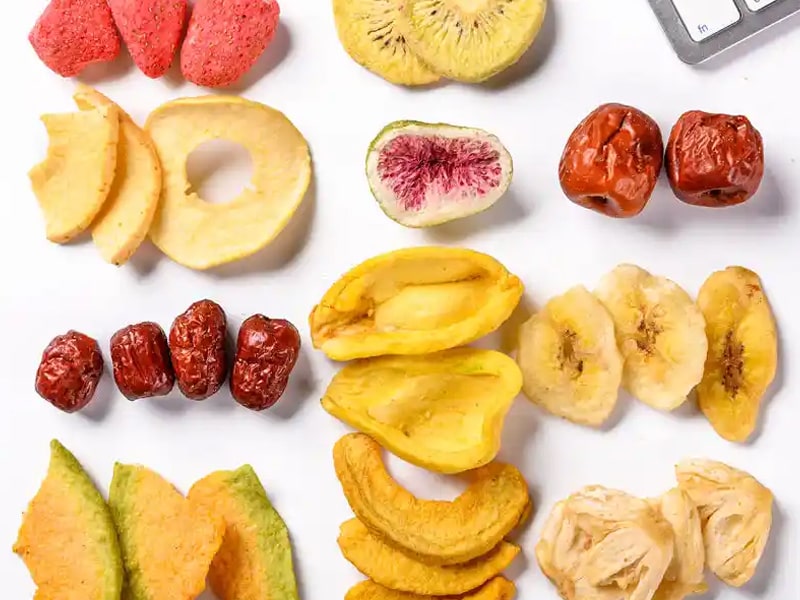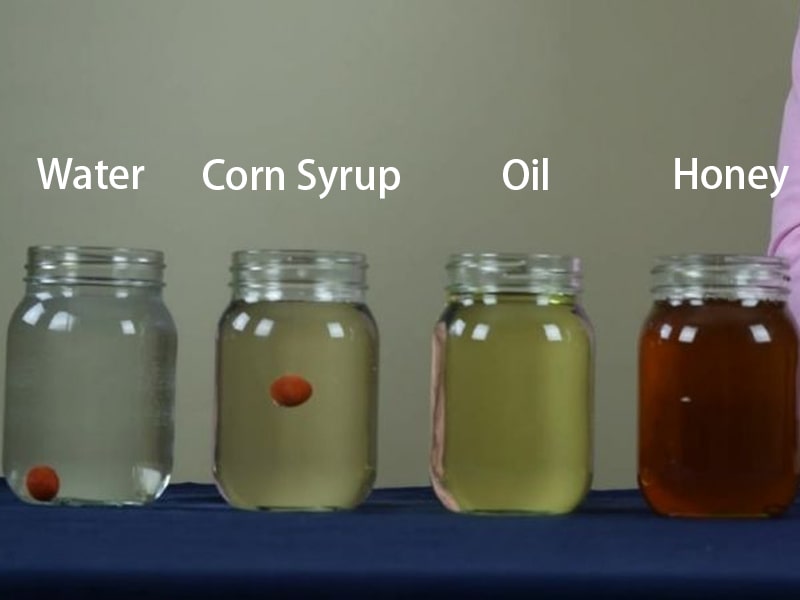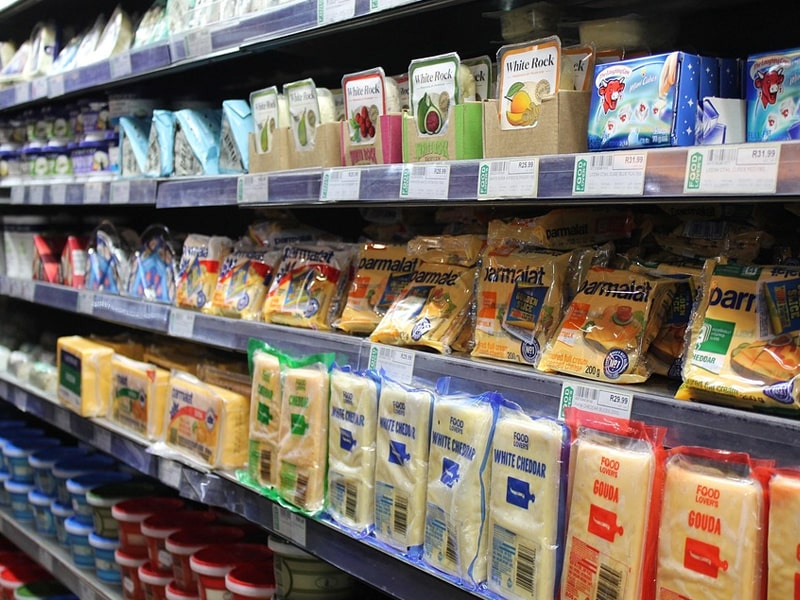Dried fruit packaging plays a crucial role in maintaining the quality, shelf life, and appeal of dried fruits. From homemade snacks to commercial wholesale products, the right packaging keeps dried fruits safe from moisture, oxygen, and other factors that can degrade flavor and nutrition. This definitive guide will explore the essential techniques, materials, and machines used in dried fruit packaging. By understanding the science and best practices behind packaging design, food manufacturers and distributors can ensure their dried fruit products reach consumers in peak condition.
The dried fruit market has grown steadily as consumers seek convenient, nutritious snacks. Raisins, dates, apricots, dried mango slices, and other dried fruits provide a sweet, energy-rich option that keeps for months, but they also present unique preservation challenges. Dried fruits contain concentrated sugars and oils that can oxidize or absorb moisture if improperly packaged. Effective packaging solutions help control these environmental factors, preserving flavor, texture, and nutritional value throughout distribution and storage.
Moreover, packaging does more than protect the contents; it communicates brand value, provides important product information, and adds convenience. Features like resealable closures, transparent windows, or attractive printed designs can enhance customer appeal and promote repeat purchases. From choosing multi-layer films with excellent barrier properties to selecting eco-friendly paper alternatives, each decision in dried fruit packaging impacts both shelf life and marketability. In the following sections, we’ll cover the benefits and requirements of dried fruit packaging, common packaging materials and styles, the machinery and processes involved, and tips for designing packaging that keeps fruits fresh and consumers satisfied.
In the packaging industry, terms like “dry fruits packaging” or “dried fruit packs” are often used interchangeably. In this guide, we’ll primarily use the term dried fruit, but readers should know that search terms such as dryfruits packaging or dried mango packaging are common when looking for solutions in this market.

Key Benefits of Dried Fruit Packaging
Proper packaging for dried fruits offers numerous advantages that go beyond simple containment. Some of the key benefits include:
- Maintains Quality and Freshness: Dried fruits are sensitive to moisture, oxygen, and light. A robust packaging barrier (such as multi-layer films or foils) keeps out moisture and air, preserving the fruit’s natural taste, aroma, and nutrients. This means that the sweetness and texture consumers expect remain intact during storage and transportation. For example, bright dried mango or apricot slices need packaging that prevents discoloration, keeping their sweet flavor and color intact.
- Extends Shelf Life: By preventing exposure to degrading elements, good packaging can dramatically extend a product’s shelf life. Techniques like nitrogen flushing (replacing oxygen with inert gas) and vacuum sealing are common in dried fruit packs to slow oxidation and microbial growth, ensuring the product stays safe to eat for longer.
- Reduces Waste: Improperly packaged dried fruits often spoil before reaching the consumer or become stale. High-quality packaging reduces damage and spoilage during transit, cutting down on waste. Additionally, features like resealable zippers or closures allow consumers to use what they need and keep the rest protected from humidity, further reducing waste at the household level.
- Provides Information and Brand Appeal: Packaging is a key communication channel between the brand and the consumer. Clear labeling of ingredients, nutritional facts, origin, and expiration date builds trust. Attractive designs, transparent windows, and a premium feel can make dried fruit packs more appealing on the shelf. A strong package design can differentiate products in a crowded market, turning a simple dried fruit pack into a brand ambassador.
- Enhances Convenience: Flexible packaging, pouches, and smaller portion packs meet consumer demand for grab-and-go snacks. Resealable packaging adds convenience by allowing easy one-hand opening and secure reclosing. Well-designed packaging also makes stacking and shipping more efficient, benefiting both retailers and end users.
Each of these benefits contributes to the success of a dried fruit product in the market. Next, we will explore the most common types of packaging materials and formats used for dried fruits.
Types of Packaging Materials and Formats
Dried fruits can be packaged in a variety of formats, chosen based on product type, shelf-life requirements, and marketing goals. Common packaging types include:
- Stand-up Pouches (Doypacks): These durable, multi-layer pouches stand upright on store shelves and are often used for snacks like mixed nuts, dried fruits, and trail mixes. They can include features like resealable zippers and clear windows to display the product. The multiple film layers (PET, aluminum foil, polyethylene, etc.) provide excellent barriers to moisture and oxygen. Stand-up pouches are a modern, space-efficient solution for dried fruit packaging.
- Flat or Gusseted Bags: Flat pouches or flat-bottomed gusseted bags are another flexible packaging option. Gusseted bags have expandable sides to hold larger volumes, making them suitable for bulk dried fruits. These bags can be made from laminated plastic films or foils. Pillow packs (horizontal pillow-shaped packs) and sachets (small sealed packets) fall under this category as well. Sachets are popular for single-serve portions or sample packs of dried fruits.
- Carton and Cardboard Boxes: Corrugated cardboard boxes are commonly used for shipping and bulk packaging of dried fruits. They protect against physical damage during transport. Retail-ready cartons (printed box packaging) can also house smaller packs or jars of dried fruits. Paperboard cartons and biodegradable paper pouches (especially compostable or recyclable options) cater to the growing demand for eco-friendly packaging in the dried fruit industry.
- Cans and Glass Jars: Metal cans and glass jars are rigid packaging options for premium dried fruit products. Cans provide a hermetic (airtight) seal and excellent protection from light, making them ideal for products like candied fruits or gourmet dried fruit blends. Glass jars offer transparency so customers can see the product; they are often used for mixed dried fruits or granola-type products. Both cans and jars are durable but heavier (and glass jars are breakable). Manufacturers must balance factors like cost, weight, and recyclability when choosing these premium packaging formats.
Each format has advantages and trade-offs. Flexible pouches offer lightweight, efficient packaging with high barrier properties, while rigid containers can provide a premium feel and robust protection. The choice of packaging format should align with the product’s needs and consumer expectations. Later, we will discuss the specific materials and machinery used with these formats.
Packaging Materials for Dried Fruits
The choice of packaging material directly affects a product’s protection and shelf life. Key material considerations include:
- Multi-layer Plastic Films: These films are widely used in flexible dried fruit packaging. Layers typically include polyester (PET) or polypropylene (PP) for durability and printing, polyethylene (PE) for sealing, and sometimes an aluminum foil or EVOH layer for oxygen and moisture barrier. This combination creates an excellent barrier to extend shelf life.
- Aluminum Foil and Metallized Films: Aluminum foil provides an excellent barrier against light, oxygen, and moisture. Many dried fruit packs use a thin foil or metallized PET layer to significantly extend shelf life. However, foil layers can make packaging harder to recycle, so some manufacturers minimize foil thickness or sandwich it between recyclable plastic layers.
- Paper and Board Materials: Paper and cardboard are common for cartons and boxes. Because paper is porous, pouches often have a thin inner lining (plastic or wax) for moisture resistance. Recyclable or compostable paper bags with bio-based coatings are increasingly used to meet eco-friendly packaging trends.
- Resealable Closures: Features like zip-lock zippers or slider seals are common on dried fruit pouches. They allow consumers to open and close the pack multiple times while maintaining an airtight barrier. The reliability of these closures is key to keeping leftovers fresh after opening.
- Rigid Containers: Glass jars, plastic bottles (often PET), and metal cans/tins are used for select dried fruits. Glass jars are transparent but heavy; PET bottles are lightweight, and metal cans offer superior airtight seals. All must use food-safe materials or linings and be sealed securely.
Choosing the right material involves balancing barrier performance, appearance, weight, cost, and sustainability. Dried fruit packaging often uses laminated materials or multi-component packaging to achieve the desired properties. In all cases, food-grade safety and regulatory compliance must be ensured.
Packaging Process for Dried Fruits
The packaging of dried fruits follows a sequence of steps to ensure product quality and consistency:
- Preparation and Quality Inspection: Before packaging, dried fruits are cleaned and inspected. This can include sorting by size or grade and removing any debris or damaged pieces. Moisture content is checked to ensure fruits are properly dried; excess moisture can lead to spoilage inside the package.
- Weighing and Portioning: The dried fruits are then portioned into the desired quantities. Multi-head weighers or volumetric fillers measure consistent portions by weight or volume. This ensures each pack contains the correct amount and avoids under- or overfilling, which is important for labeling accuracy and cost control.
- Packaging Setup and Gas Flushing: The packaging (pouches, bags, boxes, etc.) is loaded into the packaging machine. Many dried fruit packs benefit from gas flushing with inert gases like nitrogen to displace oxygen, which helps prevent oxidation and spoilage. Nitrogen flushing can occur either before filling (when empty packs are flushed) or after filling (to fill the headspace with nitrogen).
- Filling the Package: The weighed dried fruits are dispensed into the package opening. Vertical Form-Fill-Seal (VFFS) machines, horizontal form-fill-seal (HFFS) machines, or automatic pouch fillers handle this step depending on pack type. For rigid containers (like jars or cans), filling may occur via conveyor systems feeding the containers.
- Sealing and Cutting: Once filled, packages are sealed to create an airtight closure. Heat-sealing bars weld the packaging film (for pouches and bags), while cans and jars are capped or crimped. After sealing, any excess film is cut off, and the package shape is finalized. A proper seal ensures no air enters after closure.
- Labeling and Coding: Each package is labeled or coded with product information. This often includes printing expiration dates, batch codes, or nutritional information on the package. Some machines print directly on the material during sealing, while others apply pressure-sensitive labels or sleeves.
- Inspection and Packing Out: Finished packages may pass through a final inspection (checking seal integrity, weights, or vision inspection for foreign objects). The sealed packs are then collected and often collated into cartons or placed on pallets for shipping and storage.
Following these steps helps ensure that dried fruit packages leave the factory with consistent quality and safety. The next section will detail the machinery used in these packaging steps.
Packaging Equipment for Dried Fruits
Specialized machinery is used to automate the filling and sealing of dried fruit packages. Key equipment includes:
Multihead Weighers
Multihead weighers are crucial for portioning dried fruits accurately. They have multiple hoppers and load cells that combine to dispense the right weight into each package. A multihead weigher can handle irregularly shaped items (like raisins or dried mango pieces) with high speed and precision, ensuring consistent product weight per pack. This minimizes giveaway and ensures compliance with weight regulations.
Vertical Form-Fill-Seal (VFFS) Machines
Vertical form-fill-seal machines create bags from a roll of film, fill them with product, and seal them in one continuous process. The machine forms a tube from the film, fills it with weighed dried fruits, and then seals and cuts the bag to create individual packs. VFFS machines are commonly used for pillow bags, flat-bottom bags, and some gusseted bags. They are popular for dried fruits because of their efficiency and versatility in producing high volumes quickly.
Horizontal Form-Fill-Seal (HFFS) Machines
Horizontal form-fill-seal machines operate differently: they feed flat packaging material into the machine, which then forms, fills, and seals packages horizontally. HFFS machines are often used for stick packs, side-gusseted pouches, or pre-made pouch blanks. They can also create box-like shapes or three-side sealed sachets. The horizontal orientation can be advantageous for delicate dried fruits that should not drop from a tall vertical column.
Stand-Up Pouch (Doypack) Fillers
Doypack (stand-up pouch) machines are specialized fillers designed for pre-made pouches. The operator or an automatic feeder loads open stand-up pouches into holders; the machine then fills them with dried fruit, performs gas flushing if needed, and seals the top. These machines often include features like zipper insertion, tear-notch creation, and on-line printing for dates or batch codes. They offer flexibility to handle stand-up pouches of various sizes and shapes.
Vacuum and Gas Flushing Equipment
Many dried fruit packaging lines integrate vacuum sealers or nitrogen flushers. Vacuum machines remove air from the package before sealing, which is effective for prolonging freshness. Alternately, gas flushing systems inject nitrogen (or other inert gas) into each bag right before sealing. Some packaging machines have built-in gas injection nozzles, while others use a separate gas flushing chamber. This equipment is key for oxygen-sensitive products and extends shelf life.
Labeling and Cartoning Machines
After packages are sealed, secondary equipment like labeling machines can apply printed labels or wrap-around labels to jars, bottles, and boxes. Automatic inkjet printers may code bags directly with batch and date information. Finally, cartoning machines or case sealers group individual packs into cartons or cases for shipping. This completes the line from raw fruit to retail-ready package.
Using the right combination of machines ensures throughput efficiency and product consistency in a dried fruit packaging line. Integration of conveyors and inspection systems (such as metal detectors or checkweighers) further ensures quality at every stage.
Designing Effective Dried Fruit Packaging
When designing dried fruit packaging, several factors should be considered to balance product protection and consumer appeal:
- Barrier and Sealing: The packaging must provide an effective barrier against moisture, oxygen, and light. This often means using laminate films or multi-layer materials. Incorporate reliable sealing methods (heat seals, zippers) that keep air out once filled. Resealable closures (zip locks, sliders) are highly valued for consumer convenience and maintaining freshness after opening.
- Product Visibility: Transparent windows or clear packaging can showcase the vibrant color and texture of fruits such as dried mango slices or mixed berries. Letting customers see the actual product can attract interest. However, clear sections should still be paired with adequate barrier layers to protect the contents.
- Size and Portioning: Offering various pack sizes meets different market needs. Bulk bags might serve institutional buyers, while smaller grab-and-go packs target retail snack consumers. Single-serve sachets or stick packs appeal to on-the-go convenience. In designing pack size, ensure it matches the typical consumption rate to minimize waste (for example, packaging two servings in one bag so it can be resealed).
- Durability and Strength: Some dried fruits, like crunchy banana chips or dehydrated apple rings, require sturdy packaging to prevent crushing. Flexible films with good puncture resistance or adding structural support (like reinforced box corners) can help. Conversely, delicate products (like thin dried mango slices) may benefit from shorter fill heights or cushioning inserts to avoid breakage during handling.
- Labeling and Branding: Ensure all product information is clear: product name (for example, “Organic Dried Mango”), ingredients, nutritional facts, expiration date, and any certifications (organic, non-GMO, etc.). The package design should reflect your brand’s image — use colors, fonts, and imagery that appeal to your target consumer. Eye-catching labels, bold graphics, and unique packaging shapes can help your product stand out on crowded shelves.
By carefully considering these design aspects, brands can create dried fruit packaging that not only protects the product but also resonates with customers.
Quality and Safety Standards in Dried Fruit Packaging
Food safety and compliance are critical in dried fruit packaging. Key standards and certifications include:
- Food-Grade Materials: All packaging materials (films, cans, bottles, etc.) must be approved for food contact. In the U.S., this means meeting FDA regulations (Title 21 CFR). In the EU, materials should comply with regulations like EC 1935/2004 and EU No 10/2011 for plastics. These rules ensure that packaging does not leach harmful substances into the food.
- Good Manufacturing Practices (GMP): Packaging facilities should operate under strict hygiene controls. Certifications like BRCGS Packaging (British Retail Consortium standards) or ISO 22000 (Food Safety Management Systems) indicate that a plant follows protocols to prevent contamination. Regular audits ensure compliance.
- Machine and Electrical Safety: Packaging machinery often requires CE marking (for the European market) to show compliance with EU safety, health, and environmental protection requirements. Other markets may require UL certification or similar safety approvals.
- Traceability and Quality Control: Many brands implement batch and date codes on packaging to enable product traceability in case of recalls. Quality control measures (metal detectors, X-ray inspection, weight checks) are often integrated into the line to ensure each pack meets safety and weight specifications.
By adhering to these standards, manufacturers build trust with consumers and retailers, assuring that the dried fruit products are safe to eat and properly handled. Today’s consumers often look for visible signs of quality (such as FDA or USDA logos, organic certification, etc.) on packaging as a trust signal.
Sustainable Packaging for Dried Fruits
Sustainability is increasingly important in food packaging. Companies are innovating to reduce waste and environmental impact. Key sustainable practices include:
- Recyclable and Biodegradable Materials: Traditional plastic laminates can be hard to recycle due to mixed layers. Some brands are switching to mono-material films (single polymer layers) that are recyclable. Others use compostable films made from plant-based materials (PLA, PBAT) that break down in industrial compost facilities. Paper pouches with water-based coatings are another option.
- Reduced Material Use: Lightweight packaging and right-sized portions help reduce material usage. For example, using thinner films or smaller bags for single-serve packs cuts plastic per unit. Efficient packaging designs (like collapsible pouches that shrink as fruit is eaten) also lower material and shipping needs.
- Recycled Content: Packaging made partly from post-consumer recycled (PCR) plastics or papers lowers virgin material demand. Labels and inks can also be chosen to be recyclable or compostable.
- Reusable Containers: Some companies encourage refilling or reuse, such as selling dried fruits in sturdy containers (glass jars or tins) that consumers can repurpose. Bulk refill stations (where customers bring their own bags) have also emerged as a zero-waste approach.
By embracing sustainable packaging options, dried fruit brands appeal to eco-conscious consumers and often meet retailer requirements for greener products. However, it’s important to balance sustainability with the protective needs of dried fruits, so careful testing is essential when adopting new materials.
Conclusion
Effective dried fruit packaging is a combination of science, creativity, and the right technology. By selecting appropriate materials (with strong barrier properties), using automated packaging machinery, and designing user-friendly packs, manufacturers can ensure their dried fruits remain fresh, tasty, and appealing. Quality packaging reduces waste, extends shelf life, and strengthens brand reputation.
As consumer demand grows, staying up-to-date on packaging innovations—such as sustainable materials and advanced sealing methods—is key. Manufacturers should test new designs and workflows, considering product-specific needs (for example, how to best package sensitive dried mango slices versus nuts or berries).
Ultimately, high-quality dried fruit packaging is an investment in the product’s success. It elevates the consumer experience and can differentiate a brand in a crowded market. For companies looking to implement or improve dried fruit packaging lines, partnering with experienced packaging machinery providers and material specialists can make the process smoother and more cost-effective.
Whether you’re packing dates, raisins, apricots, or exotic dried mangoes, understanding and applying these best practices will keep your fruits fresh and your customers satisfied.






Comments